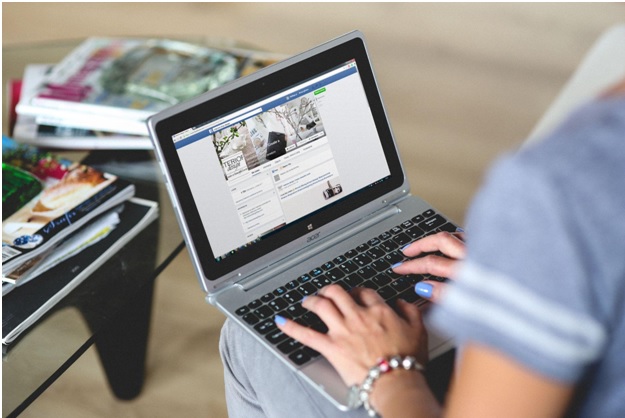How to Promote Your Business on Facebook

As one of the most popular platforms for individuals, and businesses to communicate and share information on the web, Facebook is the real champion. Facebook has grown from a platform for friends to gather to a platform for businesses to market themselves through customer interaction and self-promotion.
We’ll explore 7 different approaches to utilize Facebook social media marketing in this article.
Facebook is an efficient marketing tool to create brand identity, and extend your network, whether you are a large business or startup. It is a great platform where people can raise startup funding and also have nonprofit campaigns.
Getting the Maximum Advantage of Your Facebook Page
A Facebook page is an amazing free advertising tool for businesses. These sites let businesses promote themselves not just by presenting product offerings and services, but also by providing links, photographs, and postings on a personalized page to give customers a better idea of an image of the business.
Your Facebook business page is an excellent place to establish your brand identity while also displaying your human aspect. Don’t be scared to be humorous on Facebook if you want to relax the knot a little.
Last but not least, consider what your intended audience would want to see. Post everything on Facebook, even images, links, and clips, as long as it’s relevant to your company and looks to be something your target group would enjoy. To find out what your people reacted to the most, use Facebook Insights.
A business specialized in footwear may publish an article on how to measure your foot size properly, what sort of shoe replacements are appropriate for certain sore feet issues, and so on, in addition to amusing clips of dogs walking in small shoes. It’s great if you have a wonderful blend of comedy, educational materials, and updates promoting your store’s recent updates.
Traditional Facebook Ads
Facebook advertising, which appears on the platform’s side tabs, is the company’s own way of marketing. It’s one of the great marketing strategies for small businesses. These conventional commercials are referred to as marketplace advertising, which is a far more accurate word.
There’s an information title, an image, and a click-through connection to a Facebook page, a Facebook app, or an exterior website.
Implement Facebook advertising into your Facebook social media marketing strategy to generate likes or drive website hits.
Some of the features of Facebook ads are as follows:
- Users’ age, location, education, and interests are utilized to target audiences on Facebook.
- The ability to decide how much money to spend on promotion or business presentation.
- Ad testing is a way of evaluating ad ideas and setups by simultaneously displaying multiple ad variants.
- Built-in measuring tools for ad performance.
- Local businesses will profit from the possibility to market themselves in your area.
It’s hard to tell how efficient Facebook ads are since Facebook doesn’t provide information on ad CTRs.
We observed that Facebook ads had a “CTR of 0.051%” and an average “CPC of $0.80” in our Facebook Ads vs. Google Display Ads Infographic; but, the cost of Facebook social media marketing advertising for a business can vary substantially depending on the targeting options used and competitiveness.
When a consumer likes your page, they are effectively becoming fans of your company, and your updates will appear in their Facebook news stream. It may be quite useful to use Facebook advertising to boost your “Likes.”
As a result, additional customers will become acquainted with you and your company, perhaps leading to future transactions.
Organizing Facebook Competitions
Running Facebook competitions, freebies, or promotions is another Facebook social media marketing approach that might allow you to build your loyal following and brand awareness.
Bear in mind that you can’t actually host a competition on Facebook (for instance, you can’t request for likes as entries or have people write replies in the comments). Businesses must use a third-party app to establish their Facebook competition, then direct customers to the app from their Facebook page.
To organize the contest on Facebook you need great content ideas. Make sure you use a pitch deck template in order to organize successful Facebook competitions.
There are a variety of commercial and free programs available to assist you with this. If your Facebook page has fewer than 2,000 likes, Shortstack has a selection of free contest layouts. Pagemodo offers a free version as well. Many third-party Facebook contest applications have free versions, but they have restricted features.
Facebook Sponsored Posts

Facebook Sponsored Posts allow Facebook page admins to pay a fixed fee to have their particular Facebook posts target a specific number of individuals, therefore enhancing the exposure and views of a given post.
Some businesses have argued why they should have to pay to ensure that their messages are seen by their fans.
You might ask. Shouldn’t someone who likes my profile always sees my updates in their Facebook newsfeed just like your Instagram profile? Nope, since it assumes that individuals read through Facebook’s news feed each breathing moment of their existence.
If a follower of yours is browsing through their Facebook newsfeed at the moment you publish your stories, they’ll probably see it, but there’s no guarantee if their Facebook feed is crowded with other posts. Promoted Posts let you enhance the likelihood of being seen in a user’s news feed. Existing Facebook fans are offered Promoted Posts, which allow them to reach out to their connections.
Simply click the icon beneath any of your page posts to enable Promoted Posts.
While the fixed fee makes the process easier, Promoted Posts don’t have the same targeting possibilities as other Facebook advertisements.
Sponsored Stories
Sponsored Stories are a type of Facebook ad in which a user’s peers and their behaviors, such as Facebook likes, are shown.
Sponsored Stories seeks to capitalize on the concept of “word-of-mouth” marketing. A user is more likely to pay attention to a website if three of his friends enjoy it. The goal of Sponsored Stories is for users to do the same thing as their peers. Advertisers can show friends who have “liked this page” to get more page likes, show friends who have “claimed this offer” to get more users to claim offers, and so on.
While a friend’s activity, like a website or taking advantage of an offer, is immediately placed in a user’s news feed, these posts are easily ignored. Sponsored Stories are given priority placement in news feeds and the right-hand sidebar. Sponsored Stories has been the only ad type that works on mobile phones and tablets.
Sponsored Stories aren’t only for likes or offers; there are several perks of using them. Any Facebook Open Graph app may utilize them. Sponsored Stories can display to users that their buddy has recently played the Scramble game, with an invitation to “challenge them,” “play with them,” or any other variant.
Sponsored Stories, according to Facebook, have a 46 percent higher CTR and a 20 percent cheaper CPC than standard Facebook advertising, making them a significant marketing tactic.
The Facebook ad creation flow makes it simple to build Facebook Sponsored Stories. Advertisers must utilize a third-party supplier to create Open Graph Sponsored Stories with a tailored call to action.
Facebook Open Graph

Businesses may utilize Facebook Open Graph to tag a user’s interaction with their app. Every day, Facebook Open Graph posts billions of interactions.
Businesses may develop third-party applications that connect to a user’s Facebook account and notify them when the user does a certain action within the app. Outside of the usual “like” and “comment,” Facebook’s Open Graph enables more innovative interaction possibilities. Businesses are free to recommend that consumers “listen,” “taste,” or “read” in their posts.
It has something to do with linking the user with the Facebook Open Graph whenever a site or app asks them to sign in to Facebook. Spotify is a wonderful illustration of how Facebook Open Graph can be used as a marketing tool on Facebook.
The process begins with a Facebook login request.
This is quickly followed by a permission request, which many people simply click through without giving it any attention. I realized that I had granted rights to 130 applications, 95 percent of which I had no recollection of why I had done so.
Spotify may stream what music a user is listening to on a friend’s newsfeed after permission is granted. Users will see that they have many alternatives, including the music their buddy is listening to, listening to the song themselves, or marking it as a favorite on Spotify.
These open graph activities are distinct enough to stand out among the crowded chaos of a user’s news feed. Many Facebook games make extensive use of Facebook open graph activities, such as sending out notifications when a user completes a level or achieves a goal.
Open graph activities are being classified as a new form of consumer narrative that capitalizes on the viral effect. Because open graph posts are created by a friend rather than a company, they are more valuable to users, making them the newest and best of Facebook social media marketing tools.
Facebook Exchange (FBX)
Advertisers may use Facebook Exchange to enjoy the benefits of real-time bidding for ad retargeting. Advertisers may target audiences based on online history data — for example, if a person sees a product page on a store’s website but does not buy, the shop can use FBX to show an ad for the same product on Facebook.
While retargeting advertisements on Facebook were previously limited to the side columns, they have lately been allowed to appear in news feeds, the most coveted Facebook real estate. This is excellent news for FBX marketers, as reaction rates for news feed advertising are 10 to 50 times greater than those for right-column advertisements.
So, how effective are Facebook Exchange ads?
The click-through rate (CTR) for Facebook Exchange advertising is 40% lower than for other web retargeting ads, such as those from the Google Display Network. Other retargeting advertisements are similarly less expensive, costing 80% less per unique click than Facebook retargeting ads.
However, FBX advertisements are significantly less expensive in terms of cost-per-impression and cost-per-click, thus the financial rewards are dependent on your company’s demands. These figures may alter when FBX advertisements begin to show more often in the news stream.
Businesses are thriving via digital marketing today, and Facebook is one of the greatest tools you can have. Is your digital agency incorporating Facebook in your strategy? Let us know in the comment section below.






